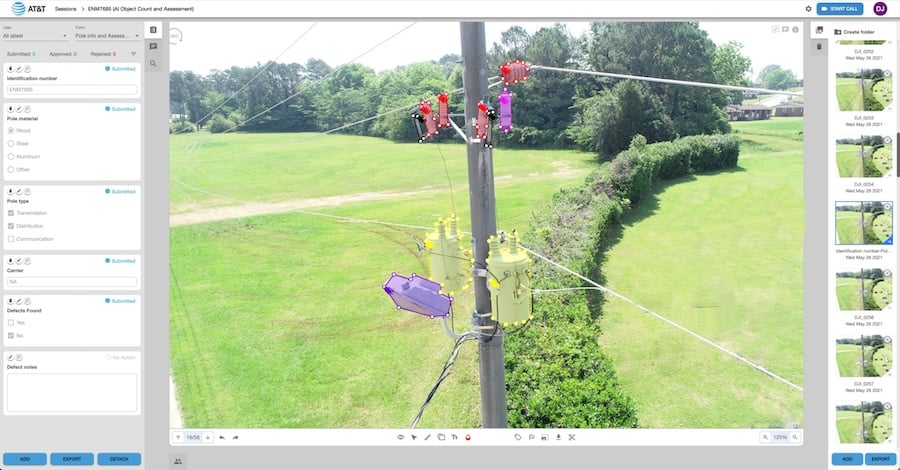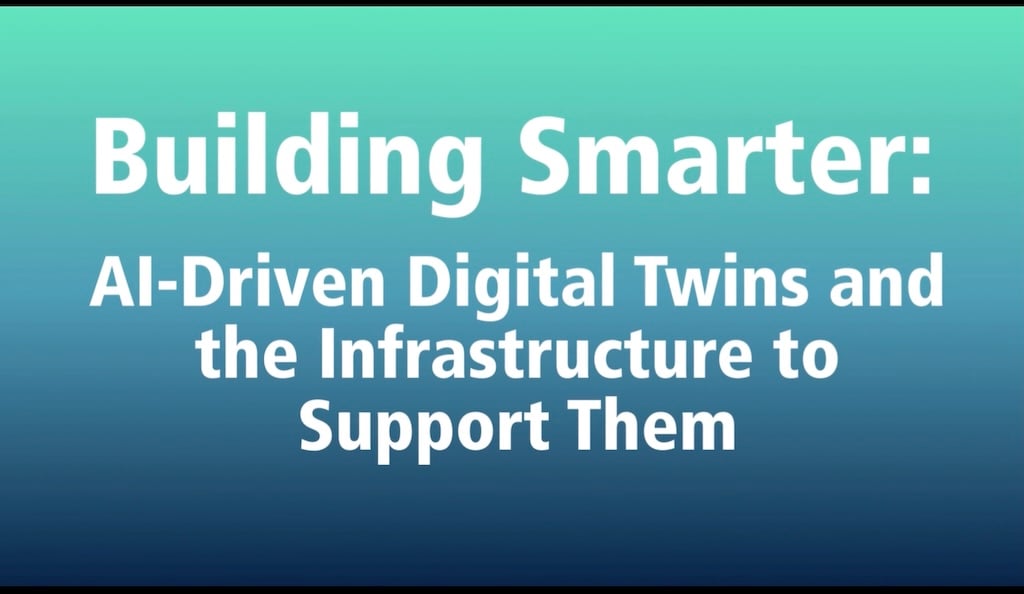
Ask ten AEC professionals what a smart road is, and you’ll get ten different answers. Some might say it uses cameras, sensors, and other devices to gather and relay data about traffic and roadway conditions. Others might say it employs artificial intelligence (AI), where hardware and software systems obtain traffic information and apply algorithms to help system users make real-time decisions. Still others might say it specifically involves connected autonomous vehicles (CAVs) — perhaps focusing on transportation networks featuring driverless vehicles.
Based on industry trends, all of these responses — and others — are at least partially accurate. In general, smart roads incorporate technology to improve roadway operations for owners, users, and other stakeholders, often involving multiple travel modes — motorized vehicles, transit, bicycles, and pedestrians. How the technology gets incorporated into infrastructure design is still unfolding. Early deployments have resulted in some growing pains, but the smart roads concept is clearly gaining traction (pardon the pun). The recently passed Infrastructure Investment and Jobs Act (IIJA) may further accelerate smart road activities at governmental agencies and AEC firms.
Vision Zero
Much of the impetus for smart roads comes from efforts to improve traffic safety — a universally favored concept, but one with numerous and diverse approaches. Vision Zero, an oft-cited, multi-national initiative that started in Sweden in the 1990s, is one approach, seeking a highway system with no fatalities or serious injuries involving road traffic. The U.S. and other countries have adopted Vision Zero in various ways.
The Intelligent Transportation Society of America (ITS America), in its Vision Zero policy, states that “. . . roadway crashes resulting in fatalities and serious injuries are preventable through comprehensive programs of data-driven engineering, enforcement, and education” and provides recommendations on how to use technology to pursue that goal. Recommendations include developing roadway designs that consider human error, potential crash types and impacts, and protection of vulnerable road users.
U.S. Projects
Smart roads technology is resulting in tangible construction work in places such as Fremont, California, which recently began building portions of its Fremont Boulevard Safe and Smart Corridor project. The nearly 10-mile project aims to achieve smoother and safer travel speeds, improve auto and transit reliability, and reduce bicycle and pedestrian collisions. To bring the concept to reality, the city is partnering with private technology firms to incorporate detection and monitoring systems, advanced analytics, connected vehicle communication, connected mobile applications for bicyclists, and adaptive traffic signal control systems.
Derq, a Detroit- and Dubai-based technology company is partnering with equipment distributor CT Group to deploy intersection analytics systems on the Fremont corridor. Derq’s systems will provide ongoing analysis from traffic video sources and use AI software to detect near-miss interactions at intersections and crosswalks and identify safety “hot spots.”

|

|
Smart flashing beacons warn drivers of pedestrians entering crosswalks. Image source: Derq.
Derq’s patented software integrates with sensors and other intelligent transportation system (ITS) equipment to monitor traffic patterns and predict the intents for vehicles, cyclists, and pedestrians. The software helps identify dangerous roadway behavior such as red-light running, speeding, wrong-way driving, and pedestrians crossing against a red light, which are key elements to preventing crashes, according to Derq. “We’re never going to get to Vision Zero unless we incorporate technology,” said Jamie Sullivan, Derq’s vice president of business development in North America. Click to view examples of Derq’s smart flashing beacons.
In addition to the intersection analytics project, the city of Fremont has awarded seven other equipment procurement contracts to upgrade traffic signal controllers, traffic management systems, and other ITS equipment in the corridor. CT Group is leading or partnering on three of the contracts. “The idea is for cars to sense people, and people to sense cars,” said Joe Hoferer, CT Group’s western region vice president. “[Analytics] is revolutionizing how we study and understand safety and risks for vulnerable road users.” Transportation agencies are also exploring ways to reallocate right of way to better serve bicyclists, pedestrians, and transit, he added.
Meanwhile, Derq and other firms are undertaking other smart-roads efforts across the U.S. The Michigan DOT is conducting a similar intersection analytics project, analyzing nearly 60 Detroit-area intersections to incorporate technology and improve safety.

Vehicle-to-everything (V2X) communication helps drivers become more aware of pedestrians and other travelers. Image source: Derq.
In Las Vegas, Derq is partnering with Motional, a joint venture of Hyundai Motor Group and technology vendor Aptiv, to test driverless technology in challenging intersections. Intersection cameras connected to roadside computers transmit birds-eye-view data to Motional’s vehicles for navigating the selected intersections, which include significant pedestrian and cyclist traffic, challenging sight lines, and complex vehicle interactions in multi-lane traffic. The elevated cameras in Las Vegas provide vital information that supplements data from vehicle-mounted sensors, said Derq’s Sullivan. “Sensors from the vehicle perspective are great, but they can’t see around corners and can’t anticipate people stepping into intersections,” he said.

Smart roads technology integrates information from a wide range of traffic infrastructure equipment and vehicle sensors. Intersection cameras from a birds-eye-view can transmit traffic information to self-driving cars, to assist with vehicle communication in complex intersections. Image source: Derq.
In the San Francisco Bay area, the Contra Costa Transportation Authority (CCTA) is evaluating testing conducted by Verizon and Nissan North America for automated driving programs. The system is being considered for select intersections, retirement communities, and as part of the county’s Innovate 680 Program. "The technology we’re testing together will contribute toward making connected and automated vehicles a safe option for future travel,” said Timothy Haile, CCTA’s executive director.
Other vehicle manufacturers are also stepping up AI capabilities. Jaguar Land Rover recently announced plans to develop new vehicles using NVIDIA’s DRIVE Hyperion 8 platform for advanced driver assistance systems. Qualcomm is partnering with GM, BMW, and Renault to incorporate Qualcomm’s Snapdragon Ride platform. Other vehicle manufacturers are also exploring various AI and CAV options.
Growing Pains
The growth of technology and autonomous vehicles has not come without setbacks. Since 2016, the U.S. National Transportation Safety Board has investigated numerous crashes of vehicles equipped with automation capabilities, including some with fatalities. In a 2021 letter to its sister agency, the National Highway Traffic Safety Administration, the NTSB called for stronger federal requirements for the design and use of automated driving systems on public roads.
In the United Kingdom, the British government is suspending plans to roll out certain smart roadways, pending collection of more safety data. According to the BBC, 38 people were killed on smart motorways between 2014 and 2019. Highways England, the government-owned company responsible for operating UK motorways, considers smart motorways as one of three main types: controlled, which have a permanent hard shoulder, but use technology such as variable speed limits to adjust traffic flows; dynamic, where the hard shoulder can be opened up at peak times and used as an extra lane; and all-lane running, where the hard shoulder has been permanently removed to provide an extra lane, with emergency refuge areas provided at regular intervals. The focus of the safety review is on roadways without shoulders.
Computing and communications hardware requirements provide additional challenges. Smart roads technology requires three main components, according to Sullivan: an “edge” computing environment, with graphics processing units (GPUs) and central processing units (CPUs) tightly integrated; a robust communications environment with small latency — the delay between an instruction for data transfer and the actual transfer; and a robust design environment — one that efficiently processes design information across the network and communications architecture.
Standards for smart systems are also still evolving. SAE International, formerly the Society of Automotive Engineers, is leading efforts related to vehicle standards. On the infrastructure side, the Federal Highway Administration (FHWA) and Federal Motor Carrier Safety Administration (FMCSA) created the Smart Roadside Initiative as a joint modal initiative encompassing technology and information-sharing research efforts. Various other governmental agencies, professional associations, and private firms are also involved in standards development. “There’s competition to determine the best approach to solve for autonomy and safety,” said Sullivan.
What It Means for the AEC Industry
The growth of smart roads projects, along with an overall growth in infrastructure work resulting from the recently passed IIJA, likely means a big upswing in workloads for transportation agencies and infrastructure-focused AEC firms. The $1 trillion package includes more than $100 billion for roads and bridges, with additional amounts targeted for road safety, rail, transit, broadband, water, and electric vehicles. Specific grants have also been established for new transportation technology. For both smart roads and more traditional infrastructure projects, industry sources see an increased emphasis on digital delivery to keep up with demand.
“The DOTs themselves are short-staffed, and so are many of the engineering firms that are doing the work,” said Dustin Parkman, vice president of mobility and transportation at Bentley. “You can only do so much with so many people. Technology can close these gaps. It is a matter of getting the DOTs and their suppliers to adopt some of these technologies, whether it be in construction, sequencing, and planning, or moving away from traditional 2D design plans to 3D models and information.”
As an example of doing more with less, Parkman cited a hypothetical bridge repair project that might start with a digital drone survey, which can be used to build a 3D model of the bridge. The digital model can be used to identify structural deficiencies and other high risk areas and fed downstream into the physical inspection process, and a majority of the inspection can be done remotely without actually having to physically be on site. For a real-world example from Bentley Systems using this digital technology, read this previous article from Cadalyst: Digital Twins Assist DOT Bridge Inspections.
Traffic analysis may also rely more on real-time, digital data, according to David McKenney, Bentley’s vice president of government relations. Applications such as the company’s CUBE product line can use information from multiple sources to analyze existing and future traffic movement. “[It uses] data from cell phone towers, from census, from GIS, from traffic signal systems, and combines that all to create a model of traffic,” said McKenney. “We can actually see what would happen if we added another lane, or if we added a high-speed rail line. What would happen if we added variable lanes that could switch directions, depending on traffic patterns?”
New Roadway Features
For roadway designers already using 3D modeling, geometric design processes might not change drastically with the emergence of smart roads, but new wrinkles are likely with certain ancillary elements, such as instrumentation along the roadway, new striping materials needed for reflectivity, and signage, added Parkman. “Visual indicators become really important,” he said.
Roadways of the future might also incorporate more telecommunications and energy facilities, predicted McKenney. “The most valuable real estate when it comes to expanding broadband happens to be the DOT right of way,” he said, noting that telecommunications firms are often eager to install fiberoptic lines in roadway corridors.
The growth of electric vehicles is requiring state and local governmental agencies to consider where to put charging stations, and where those charging stations get their energy. One scenario under consideration is installing solar panels in highway interchange ramp areas. “There’s a lot of interest in repurposing these right of ways to be more green — providing solar power, providing the broadband infrastructure, and being multimodal,” said McKenney.
With technology playing a key role, roadways of the future will definitely have a different look and feel than roadways of yesteryear. What constitutes a smart roadway may also change along the way, with the definition morphing along with the technological twists.
Andrew G. Roe
Cadalyst contributing editor Andrew G. Roe is a registered civil engineer and president of AGR Associates. He is author of Using Visual Basic with AutoCAD, published by Autodesk Press. He can be reached at editors@cadalyst.com.
View All Articles




Searching for more information about Architecture, Infrastructure, and Construction?
Click here!